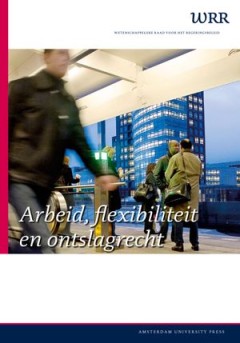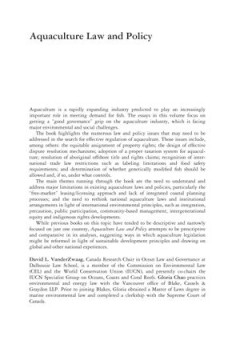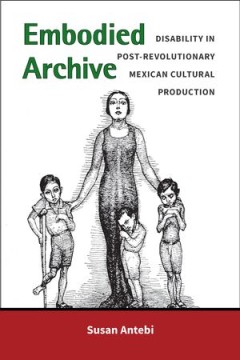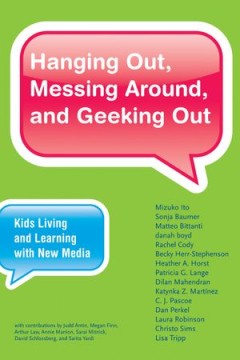Filter by

Arbeit transformieren!: Denkanstöße der Kommission »Arbeit der Zukunft«
Die Arbeitswelt wird sich in den kommenden Jahrzehnten fundamental verändern. Welche Kräfte wirken auf dem Arbeitsmarkt? Mit welchen Veränderungen ist zu rechnen? Und was bedeutet dies für die arbeitsmarktpolitischen Akteure? Dieser Abschlussbericht der Kommission »Arbeit der Zukunft« - mit Mitgliedern aus Wissenschaft und Praxis, Wirtschaft und Gewerkschaften - liefert eine Diagnose der …
- Edition
- -
- ISBN/ISSN
- 9783839440520
- Collation
- -
- Series Title
- -
- Call Number
- 300

Arbeidsflexibiliteit en ontslagrecht
- Edition
- -
- ISBN/ISSN
- 9789053569931
- Collation
- -
- Series Title
- -
- Call Number
- 300
- Edition
- -
- ISBN/ISSN
- 9789053569931
- Collation
- -
- Series Title
- -
- Call Number
- 300

Aquaculture Law and Policy
The aquaculture industry is fast expanding around the globe and causing major environmental and social disruptions. The volume is about getting a 'good governance' grip on this important industry. The book highlights the numerous law and policy issues that must be addressed in the search for effective regulation of aquaculture. Those issues include among others: the equitable and fair assignmen…
- Edition
- -
- ISBN/ISSN
- 9780203966556
- Collation
- -
- Series Title
- -
- Call Number
- 300

'Appropriation and Representation: Feng Menglong and the Chinese Vernacular S…
Feng Menglong (1574–1646) was recognized as the most knowledgeable connoisseur of popular literature of his time. He is known today for compiling three famous collections of vernacular short stories, each containing forty stories, collectively known as Sanyan. Appropriation and Representation adapts concepts of ventriloquism and dialogism from Bakhtin and Holquist to explore Feng’s metho…
- Edition
- -
- ISBN/ISSN
- 9780472901517
- Collation
- -
- Series Title
- -
- Call Number
- 300

Aporie dell’integrazione europea: Tra universalismo umanitario e sovranismo
Aporie dell’integrazione europea: tra universalismo umanitario e sovranismo è frutto di un percorso di studio e di ricerca che ha coinvolto studiosi afferenti all’Università di Évora e al Centro de Investigação em Ciência Política (CICP) in Portogallo e studiosi del DSU della Federico II di Napoli e di altre prestigiose università italiane. Il volume articolato in tre sezioni, affro…
- Edition
- -
- ISBN/ISSN
- 9788868870997
- Collation
- -
- Series Title
- -
- Call Number
- 300

Antropología en dilemas: parágrafos transdisciplinarios
Exhibition on the role of the anthropologist in its different facets as a trainer, researcher, disseminator.
- Edition
- -
- ISBN/ISSN
- 9789568416782
- Collation
- -
- Series Title
- -
- Call Number
- 300

Embodied Archive: Disability in Post-Revolutionary Mexican Cultural Production
Embodied Archive focuses on perceptions of disability and racial difference in Mexico’s early post-revolutionary period, from the 1920s to the 1940s. In this period, Mexican state-sponsored institutions charged with the education and health of the population sought to strengthen and improve the future of the nation, and to forge a more racially homogeneous sense of collective identity and his…
- Edition
- -
- ISBN/ISSN
- 9780472902422
- Collation
- -
- Series Title
- -
- Call Number
- 362.4 ANT e

Educated Youth and the Cultural Revolution in China
The Cultural Revolution was an emotionally charged political awakening for the educated youth of China. Called upon by aging revolutionary Mao Tse-tung to assume a “vanguard” role in his new revolution to eliminate bourgeois revisionist influence in education, politics, and the arts, and to help to establish proletarian culture, habits, and customs, in a new Chinese society, educated young …
- Edition
- -
- ISBN/ISSN
- 9780472901555
- Collation
- -
- Series Title
- -
- Call Number
- 301.951 SIN e

The Economy of Communist China, 1949–1969
Economic development in mainland China during the first two decades of Communist control provides a typical example for the difficult task to transform a vast underdeveloped agrarian economy into a modern industrial one. In the first half of this period, a series of massive transformations of social and economic institutions was accompanied by a drafted industrialization program; the result was…
- Edition
- -
- ISBN/ISSN
- 9780472902200
- Collation
- -
- Series Title
- -
- Call Number
- 338.951 CHE e

Hanging out, messing around, and geeking out : kids living and learning with …
An examination of young people's everyday new media practices—including video-game playing, text-messaging, digital media production, and social media use. Conventional wisdom about young people's use of digital technology often equates generational identity with technology identity: today's teens seem constantly plugged in to video games, social networking sites, and text messaging. Yet ther…
- Edition
- -
- ISBN/ISSN
- 978-0-262-01336-9
- Collation
- -
- Series Title
- The John D. and Catherine T. MacArthur Foundation Series in Digital Media and Learning
- Call Number
- 302.23 ITO h
 Computer Science, Information & General Works
Computer Science, Information & General Works  Philosophy & Psychology
Philosophy & Psychology  Religion
Religion  Social Sciences
Social Sciences  Language
Language  Pure Science
Pure Science  Applied Sciences
Applied Sciences  Art & Recreation
Art & Recreation  Literature
Literature  History & Geography
History & Geography